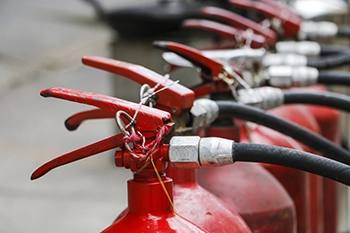Emergency lighting is often overlooked, yet it plays a crucial role in fire safety compliance. When normal power fails, lighting helps people find escape routes, avoid hazards, and evacuate safely. For landlords, business owners, and those managing HMOs, it is a legal duty to ensure that emergency lighting works correctly.
This article explains the role of emergency lighting in fire safety compliance, the legal framework that applies in the UK, and the testing requirements that landlords and managers must follow.
Emergency lighting refers to lighting that switches on automatically when mains power fails. Its purpose is not to provide full brightness but to give enough illumination for safe evacuation.
In fire safety terms, emergency lighting helps occupants:
Without working emergency lighting, escape can become chaotic, especially in smoke-filled environments or buildings with complex layouts.
The Regulatory Reform (Fire Safety) Order 2005 makes the “responsible person” legally accountable for fire safety measures, including emergency lighting. This applies to landlords of HMOs, employers in workplaces, and managers of commercial premises.
Emergency lighting systems should also comply with BS 5266-1:2016, the British Standard that sets out the code of practice for installation and maintenance. This standard defines where lighting must be placed, how long it should last, and how often it should be tested. It covers escape route lighting, open area lighting, high-risk task area lighting, and standby lighting.
The standard also requires systems to provide illumination for a minimum of three hours in most non-domestic buildings, ensuring that occupants can evacuate safely or remain in place until the emergency is resolved.
Guidance from the Fire Industry Association summarises the BS 5266 series and is a useful resource for landlords and managers.
Not every property needs a full emergency lighting system, but in many cases, it is mandatory. Common requirements include:
For smaller single lets, emergency lighting may not always be required. However, landlords should confirm requirements through a professional fire risk assessment to avoid compliance issues.
Houses in multiple occupation face unique challenges during emergencies. Tenants may not know each other, may be asleep in separate rooms, and may rely on shared corridors and stairwells. If the mains power fails, these routes can become completely dark, making evacuation difficult or impossible.
Emergency lighting in HMOs ensures that:
Because of these risks, many councils insist that HMOs above a certain size or layout include emergency lighting as part of licensing conditions.
Emergency lighting is only effective if it works when needed. Testing and maintenance are therefore critical.
The key duties include:
In workplaces, the Health and Safety Executive expects employers to keep written records that enforcement officers can check. In residential settings, local housing officers often review emergency lighting logs during inspections.
Regular fire safety inspections can also verify that emergency lighting is working and properly documented.
The “responsible person” has ultimate accountability. In an HMO this is usually the landlord or property manager. In a workplace, it will be the employer or building owner. They must ensure testing is carried out, records are kept, and faults are corrected promptly.
Consider a three-storey HMO where a fire breaks out in the kitchen during the night. Smoke quickly fills the corridor, and the mains power trips. Without emergency lighting, tenants may struggle to find the staircase, leading to confusion and delay. With properly installed and maintained emergency lighting, corridors remain illuminated and the escape route is clear, giving occupants the best chance of leaving the building safely.
This example highlights why emergency lighting is not just a compliance issue but a life-saving measure.
Even well-intentioned landlords and managers sometimes fall short. The most common mistakes include:
These mistakes create serious risks and can lead to enforcement action from local authorities or fire officers.
To meet legal duties and protect occupants, landlords and businesses should:
Following these steps shows a clear commitment to fire safety and reduces the risk of enforcement action.
Under the Fire Safety Order, enforcement officers can request proof of emergency lighting compliance. If landlords or businesses fail to provide evidence, they risk improvement notices, fines, or prosecution. In severe cases, unsafe buildings can be closed until compliance is achieved.
Emergency lighting is an essential part of fire safety compliance. It guides occupants to safety when mains power fails, supports evacuation, and ensures escape routes remain usable.
UK law requires responsible persons to install, maintain, and test systems in line with BS 5266. Monthly checks, annual tests, and accurate logbooks are key to compliance.
By treating emergency lighting as a core safety measure, landlords and businesses protect tenants, staff, and the public while meeting their legal obligations.
Our team provides fire risk assessments, inspections, and training to help ensure compliance with emergency lighting requirements. Contact us today to arrange support.

The Complete Fire Extinguisher Maintenance Guide for Landlords, HMO Owners, and Businesses Fire extinguishers save lives - but only if they are properly maintained. Whether...

Understanding Fire Safety at Home Fire safety isn’t just a concern for landlords and business owners. Every home, whether rented or privately owned, needs the...